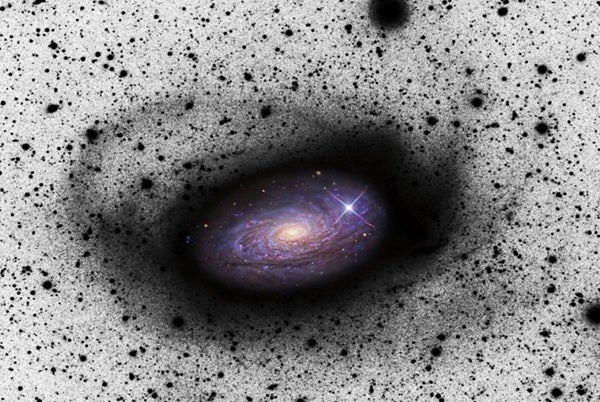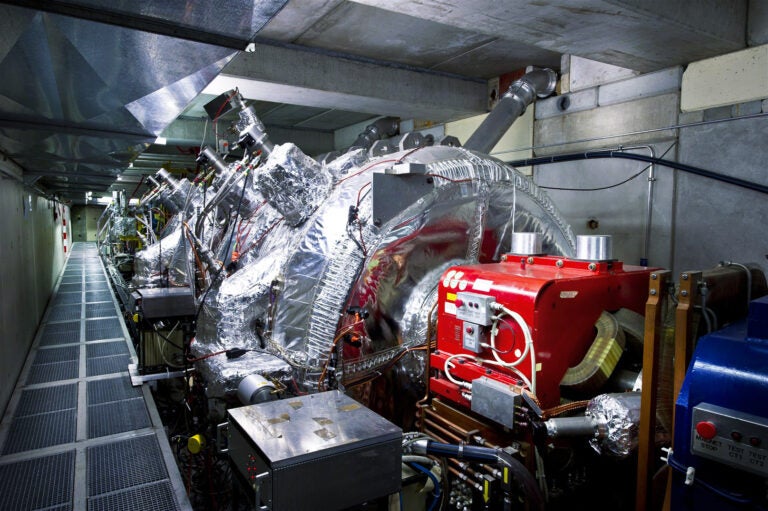Since 1997, scientists have been uncovering traces of spiral galaxies swallowing dwarf galaxies around the Milky Way Galaxy and in the vicinity of our immediate cosmic neighborhood, known as the Local Group of galaxies. But the Local Group, with its three spiral galaxies and numerous dwarfs, is much too small a sample to see whether theoretical predictions of the frequency of such digestive processes match observations. Now, for the first time, a new survey has managed to detect the telltale tendrils of galactic digestion beyond the Local Group. An international group of researchers led by David Martínez-Delgado of the Max Planck Institute for Astronomy and Instituto de Astrofísica de Canarias has completed a pilot survey of spiral galaxies at distances of up to 50 million light-years from Earth, discovering the telltale signs of spirals eating dwarfs.

Astronomy magazine has teamed up with Emmy Award-winning artist Jon Lomberg to offer Galactic Tidal Star Streams. This poster is the first and only artwork showing galactic tidal star streams, which occur as larger galaxies rip stars away from smaller ones and consume them. You can get this 16” x 20” print at MyScienceShop.com today!
Detailed simulations depicting the evolution of galaxies predict both tidal streams and a number of other distinct features that indicate mergers, such as giant debris clouds or jet-like features emerging from galactic disks. Interestingly, all these various features are indeed seen in the new observations — impressive evidence that current models of galaxy evolution are indeed on the right track.
The ultra-deep images obtained by Delgado and his colleagues open the door to a new round of systematic galactic interaction studies. Next, with a more complete survey that is currently in progress, the researchers intend to subject the current models to more quantitative tests, checking whether current simulations make the correct predictions for the relative frequency of the different morphological features.
Remarkably, the team obtained these cutting-edge results with the telescopes of ambitious amateur astronomers: For their observations, the researchers used telescopes with apertures between 4 and 12 inches (10 and 50 centimeters), equipped with commercially available CCD cameras. The telescopes are robotic (that is, they can be controlled remotely) and are located at two private observatories in the United States and one in Australia. The results attest to the power of systematic work that is possible even with smaller instruments: While larger telescopes have the undeniable edge in detecting very distant, but comparatively bright star systems such as active galaxies, this survey provides some of the deepest insight yet when it comes to detecting ordinary galaxies that are similar to our own cosmic home, the Milky Way.










